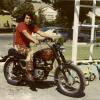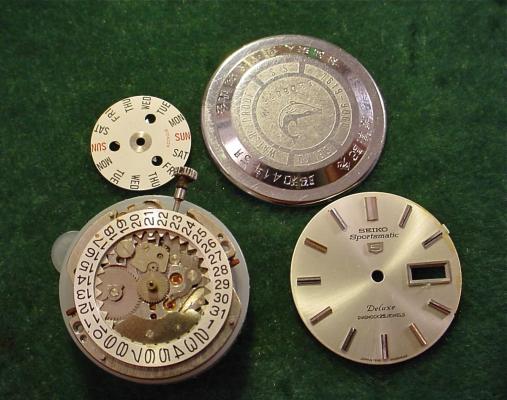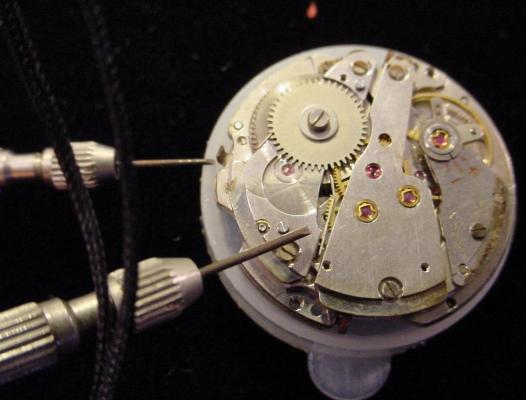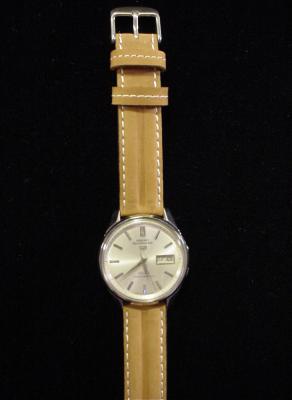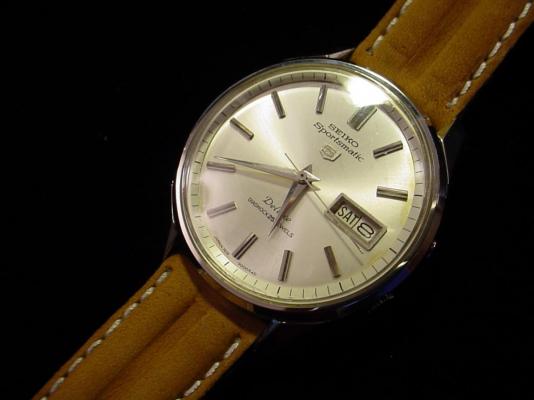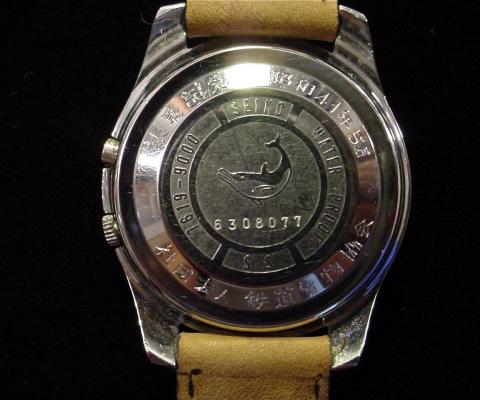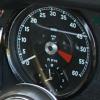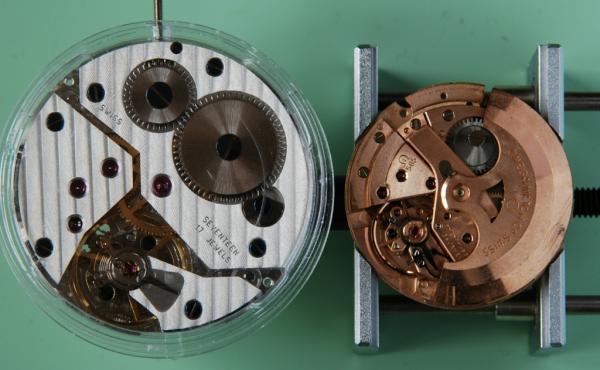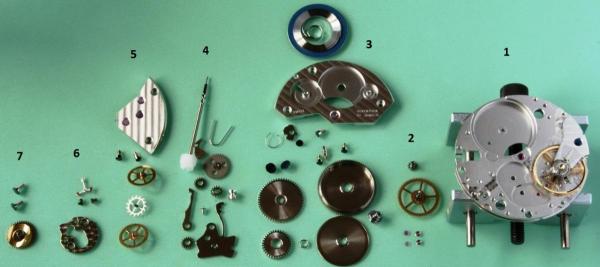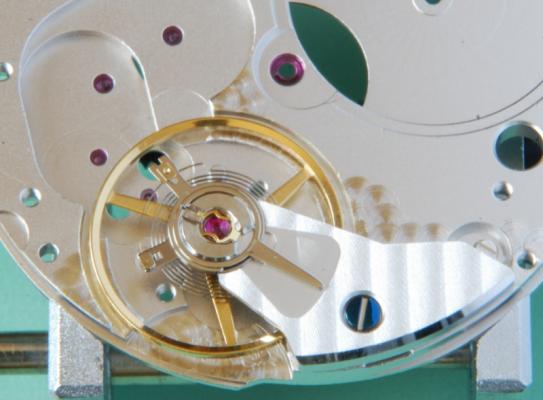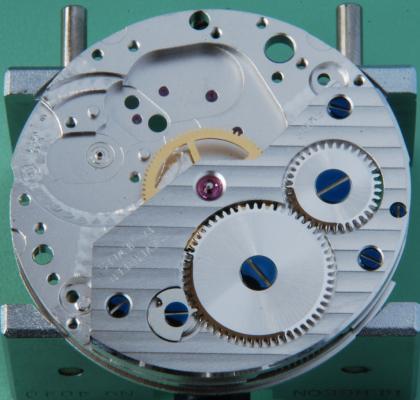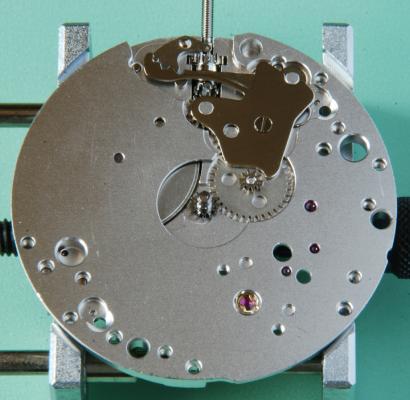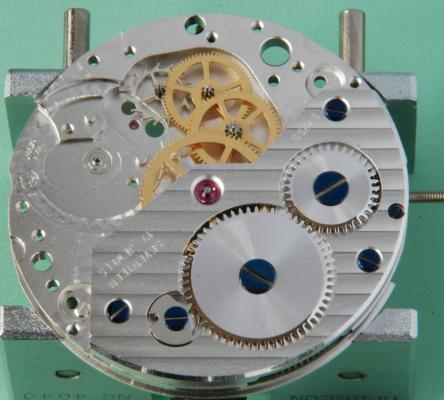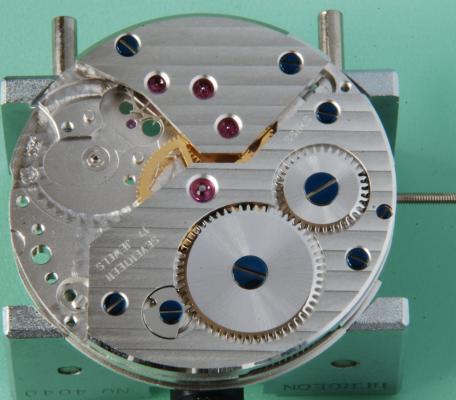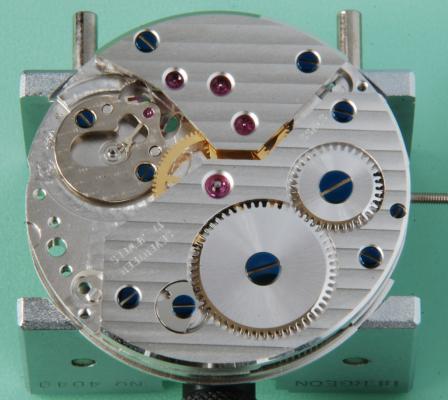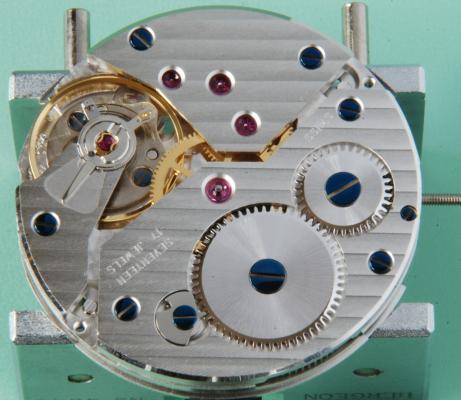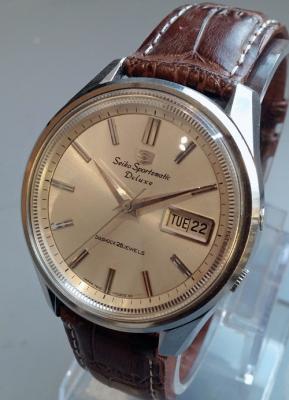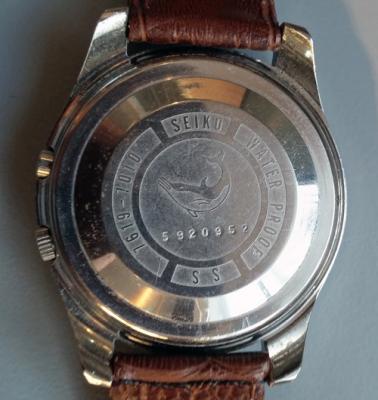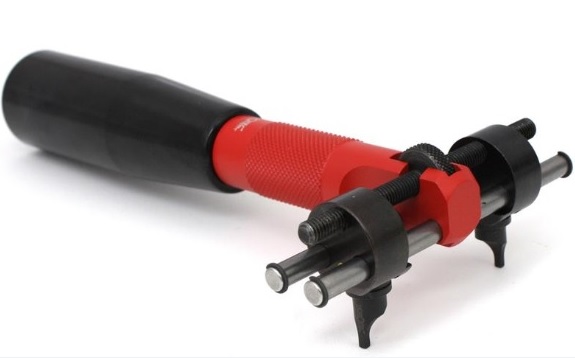Leaderboard
Popular Content
Showing content with the highest reputation on 08/09/15 in all areas
-
A friend of mine that sells goods at the swap meet told me that he had 3 watches that weren't working and asked me to take a look . They were a Seiko Kinetic , a Citizen Eco-Drive , and this Seiko 5 Sportsmatic Deluxe 25 jewel automatic from March 1966 . The Kinetic and Eco-drive were power problems but the automatic was stuck , ...the balance would swing when the watch was shaken but no movement from the drive train . There is a regular crown for setting and a push button that I didn't know the purpose of . Both the crown/stem and push button were rusted stuck . I found out that this model has a hacking feature that stopped the center wheel via the crown/stem and because the crown was in the setting position , the hack was engaged holding the gear train in position although the balance was free . The push button changed the date wheel when pushed....if it wasn't rusted . I also found out that I could not get the tech manual for this caliber , but a member from another forum sent me the tech Info from a Caliber 7606....which is close but not the same . I told my friend that I would fix the Kinetic and Eco-Drive at my cost if I could keep the automatic and he had no problem agreeing to this arrangement . I installed a new capacitor in the Kinetic and it was happy , and I left the Eco-drive in a sunny place for more than 16 hours ...and it was happy . I removed the movement from the automatic and and let the parts sit in a bicarbonate of soda and water solution for a couple of days alternating with a spa treatment in the ultra-sonic to take care of the rust problem . The small cir-clip on the pusher was toast , and after searching for one on the Bay with no luck , I was able to rob one from a Seiko 7T32 chrono that's now a donor . A service on the movement and a very light buff of the case and bezel , a light polish of the case , bezel , case back and crystal and now this puppy's Happy . :thumbsu:2 points
-
You can add images to your post simply by using the "Click to choose files" link which you will find below the post editing box. If you do not see the link then use the "Drag files here to attach, or choose files" function which is found at the bottom of each edit box. You will also find a drop down menu to the right of the editing box "Insert Other Media". From here you can use an attachment you have previously uploaded in another post, or you can insert an image from a URL on another website or file sharing facility. Once you have added the files they will upload and you will see a "+" symbol next to each uploaded image. Click this and the image will be placed at your cursor position in the editing window. Please make sure you compress your images using simple software so that you do not exceed this limit and also it will allow people to view your pictures much faster. If you have a lot of images I recommend you using a bulk photo compressing software like Faststone Photo Resizer.1 point
-
Hi I've just joined the forum so by way of an introduction and where I am in this hobby, I'm posting this build of a 6498. It's not a full walkthrough but this forum seems the best place for it. I usually work on older watches but have been meaning to have a go at one of these for some time and received a 20% discount offer from PayPal so I picked up an ETA6498-1, dial and hands on eBay. The case came from elsewhere. There are loads of people selling these as kits to build your own watch. This is just about the most basic movement you can buy, with no complications. There are two calibres in the family, the 6497 has the sub second counter opposite the crown so at 9 O’clock and the 6498 sub seconds is at 6 O’clock which I prefer but, the two calibres are very similar with many shared parts. Servicing one of these simple ETAs is probably not a bad way to start. I didn’t do that but, thought it might be nice to work with a new movement for a change and play with the Etachron system. To the best of my knowledge, these movements come in four grades: Standard; Elabore; Top and Chronometer. The lower two grades are easy to buy so that's what I have. The top two are not so readily available. It’s big at 36.6 mm diameter so, minimum case size must be 41-42 mm diameter as that’s a case wall of 2 mm only. People use these in cases much bigger than that but, I chose a 42 mm case as my wrist is only 6.75”. Here’s the spec for my grade and a bare movement picture (in its plastic case) next to a very dirty Omega 565 spares movement which is 28 mm diameter. Manual wind, 46 hour reserve 17 jewel and Incabloc shock protection with Etachron system. 18000 A/h (2.5 Hz) frequency It’s possible to buy these in a foil sealed pack (I think packed with an inert gas) and use straight from that pack but most, like mine, are sold ‘loose packed’ so should be serviced before use. I will do that and also see if I can improve a little on the way it runs straight out of the box. ETA publish a set of service instructions for this calibre with types of oils and an assembly sequence and the pdf is readily available. I more or less follow that assembly sequence. For the performance, to set a datum, I wound the movement, let it run for a day and then tested the 24H and 0H conditions. The CH, 6H and 9H are the only specified test positions for this calibre but, I tested over all six positions. Results as follows: Amplitude: max 290 degrees at 0H and min of 220 degrees at 24H. Six position delta: at both 0H and 24H of 18 seconds. Beat error under 0.4 milliseconds. These are pretty good and almost chronometer spec so I will try and get within that, being delta of 12 seconds at 0H and 15 seconds at 24H. On the older Omega movements such as the 5xx series, some are chronometer rated (e.g. 561) and some are not (e.g. 565). I remember looking at the parts commonality between these some time ago and I’m pretty sure that there were no differences in the critical parts so, those usually will come close to that spec. On this 6498, the balance and balance spring seem to be the major differences to guarantee chronometer spec for the better movements. Well, I have the cheaper one so, we’ll see. First is to line up all the big screwdrivers as these started as pocket watch calibres so, all the screws are big for me. Stripped and cleaned, the parts are these and this shows this is a simple movement. The parts are in seven groups working from the right. This is not a blow by blow account but I took some pictures to show how it goes together. These are all the pieces. 1. Plate with balance still mounted. 2. Incablocs and second wheel/cannon pinion. 3. Mainspring, barrel, ratchet wheel, crown wheel, click and barrel bridge. 4. Keyless works. 5. Train wheels and bridge. 6. Pallet fork and bridge. 7. Case clamp screws and hour wheel. First to go on are the Incablocs. I don’t know what reflection is being picked up on the machined parts of the plate but there is no discolouration at all in reality. For those in the know, I have the curb pins wide open as I am adjusting concentricity and centering of the hairspring between them. Really, for me to improve this movement performance, I can adjust the wheel shakes and try for the best configuration of the hairspring so, I spent a little time here. No poising of the balance at this time. Nice to have an adjustable stud carrier to set the beat error. This Etachron system is quite clever and it’s pretty new for me. It certainly reduces the amount of hairspring work which is not my favourite. I know it's not universally liked but it seems pretty neat to me. I end up with a very slight turn on the stud holder after some playing and am happy so, close up the curb pins again for final tweaking when it’s on the timing machine. Second wheel and cannon pinion fitted. Mainspring mounted in barrel and the complete barrel and barrel bridge mounted with its three screws, not forgetting to fit the setting lever screw first (!) which must go in before the bridge. Ratchet wheel, click and crown wheel fitted. It’s quite an attractive finish and the blued screws are a nice contrast. Turning over and the keyless works are fitted. I was a little generous with the grease here. This side of the plate is not so well finished but will be hidden under the dial so not so critical. Nice that there are holes in the minute wheel to allow the train oiling later. Here the rest of the train is shown, third, fourth and escape wheels. And now the train bridge mounted with its two screws. A little bit of wheel shake checking here but, it’s very good. Then the fork and bridge are fitted. That bridge is not the most attractive but it’s usually obscured by the balance. Checked the fork locking and so on here and no adjustment needed. Finally, the balance goes back in and the movement lives again. I let it run for 15 minutes and then removed the balance to oil the pallet jewels with 9415 (out of interest, I'm only using Fixodrop on the escape wheel and pallet jewels). This is an easy job on such a big movement but trickier for me on a very small ladies calibre. I have an Omega 684 in my wife's watch which is about 2/3 of the 565 size. After running for 24 hours again, I made some tweaks to the curb pins to equalize the horizontal and vertical running a bit better. Now, the six position delta is 10 seconds at both 0H and 24H so, I’m very happy with that. This really is a terrific movement for the money in my opinion. Bit more to follow later with (huge) case, dial etc. Hope some of this is of interest. Cheers, Chris1 point
-
Nice work, what's the translation of the writing on the caseback? I have a slightly older sibling, a 7619-7010 from September 1965 (with the obligatory rattly rotor): Sorry didn't notice your request on the other site or I could have sent you this: Seiko 7619A.pdf bit late in the day & its only the parts list.1 point
-
1 point
-
Hi, As part of my next stage of learning I am going to work on some automatic movements I have, taking apart, studying how they work and putting them back together again. Up to now I have only worked on hand wound movements. One of the items I need to get is some braking grease to use on the inside barrel wall. I have been researching as much as I can and there appear to be two main choices - Moebius 8217 and Kluber P125. The Kluber is considerably more expensive, but if it is a good product I'm happy to pay as I imagine it will last a long time. I'm just posting to see if anybody has a view on the subject, on these products or perhaps others not mentioned. Thanks Stephen1 point
-
Thanks Marc. I wonder what the difference is? On Cousins 8213 is described as strong braking for brass whereas 8217 says anti-sliding, powerful braking for large walls.1 point
-
I use moebius 8213 on barrel walls. Not too pricey and seems to do a good job. My 20ml pot will probably outlast me unless I find another use for it.1 point
-
Yes - it is indeed best practice to clean the oil pots out once a week or sooner if you notice dust contamination, I know some watch repairers who clean the pots out every day.1 point
-
I only clean out my oil pots if I notice contamination of any sort in them. I do check thoroughly with a loupe each time before lubricating a movement.1 point


